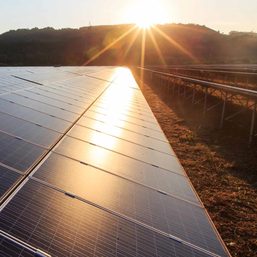SUMMARY
This is AI generated summarization, which may have errors. For context, always refer to the full article.
![[ANALYSIS] Should LBP and DBP be merged into a superbank?](https://www.rappler.com/tachyon/2023/03/TL-LBP-DBP-Superbank-March-31-2023.jpg)
On March 23, Finance Secretary Benjamin Diokno revealed that President Ferdinand Marcos Jr. has “approved” the merger of the country’s two largest state-owned banks: the Land Bank of the Philippines (LBP) and the Development Bank of the Philippines (DBP).
This merger, which is expected to happen before yearend, said Diokno, is supposed “to create a bigger, stronger, and more resilient bank that can better serve the country’s development needs.”
Of the two entities, LBP will be the survivor, having larger assets (P2.76 trillion, versus DBP’s P1.03 trillion), having a larger authorized capital stock, having much more branches (752 compared to DBP’s 147), and having a “stronger financial position.”
Once combined, LBP-DBP will be the country’s largest bank, with combined assets worth P4.18 trillion. That will dwarf BDO, currently the country’s largest bank, with assets worth P3.73 trillion as of last September.
But is this a good idea? Could there be drawbacks?
Old proposal
This is not the first time the LBP-DBP merger was proposed.
Back in 2016, the late former president Benigno Aquino III had already issued an executive order approving the very same merger. This was based on the recommendations of the Governance Commission for GOCCs (GCG).
For one, said the GCG, the functions of LBP and DBP aren’t too different from one another. Try to make out the difference. On the one hand, LBP was primarily tasked to “[finance] the acquisition and distribution of agricultural estates for division and resale to small landholders as well as the purchase of landholdings by agricultural lessees.” But at the same time, they provide loans to small farmers and fisherfolk, and have a “social mandate to spur countryside development.”
On the other hand, DBP was mandated to “[provide] banking services for the medium- and long-term needs of small and medium enterprises (SMEs) in the agricultural and industrial sector, particularly those operating in the countryside.”
Another benefit is that by operating on a much larger scale, LBP-DBP will enjoy cost savings that the two entities wouldn’t realize if they were to remain separate. This is otherwise known as “economies of scale.”
For example, they could easily connect their networks across the regions and reach more customers, they can reduce several costs (like administrative and operating costs), they can diversify their investments better, and they can also finance larger projects with their giant pool of assets.
This is not to say, however, that are no cons.
Obviously, in the pursuit of efficiency, the merger will lead to layoffs, and as early as now some staff in these banks are worrying who might get the chop. Secretary Diokno mentioned “generous” separation or retirement packages, and insisted that the merger is needed nonetheless for the “greater good.”
Next, if the two banks were to merge, the new entity may possibly lose focus on its core mandates and areas of expertise. Even now, some stakeholders are bemoaning the fact that over the years LBP has focused too much on commercial banking to customers rather than farmers or cooperatives.
As of 2021, for example, about two-thirds or P587.3 billion of LBP’s loans to all sectors went to areas other than agriculture (like MSMEs, utilities, housing, logistics, education, healthcare, environment projects, and tourism).
Meanwhile, just 30% or P248 billion of its sectoral loans went to agriculture. And of those agriculture loans, only P38.8 billion or 15.6% went to “small farmers and fishers, cooperatives, and farmers associations.” The rest, amounting to P209.1 billion, went to “other players in the agri-business value chain.”
Maybe this reflects the fact that the Philippine economy right now is no longer agricultural, and other sectors are just as crucial (or even more so) for growth. Stakeholders fear that the LBP-DBP behemoth might further lose sight of its objective to help out poor agricultural workers.
Interestingly, this is exactly the reason Marcos Jr. used in 2016 when he came out with a statement then opposing the merger. He was running for the vice-presidency at the time, and said that the merged LBP-DBP “will be a commercial bank” and that we will no longer have an “agricultural bank” that is focused on the needs of farmers.
Fast-forward to 2022, however, he has greenlit the merger. I wonder why he changed his mind.
Another major concern is that the merger of LBP and DBP will invariably reduce competition in the banking sector. Basic economics tells us that market concentration is not good for consumers, since it almost always results in lower output (or poor quality service) at higher prices.
In the context of the banking sector, the LBP-DBP entity might also turn into a bank that’s “too big to fail” – that is, a superbank that will need rescuing (using taxpayers’ money) when a severe financial crisis hits our shores.
Financial sector jitters
Interestingly, Secretary Diokno brought up the proposal to merge LBP and DBP just a few weeks after the collapse of Silicon Valley Bank in San Francisco, among other banks, and amid turmoil and jitters in global financial markets. (READ: Should Filipinos worry about the bank failures abroad?)
In fact, Diokno referred to this in his press conference: “[T]he President expressed the desire to merge the two to make it the biggest bank in the country because of the recent financial developments abroad.”
But this raises the following questions: Why announce it now? Is there any iota of possibility that our state banks may be at risk due to the banking woes abroad?
In fact, the risks may be coming from our very shores. Remember Marcos Jr.’s proposed Maharlika Investment Fund – a pseudo-sovereign wealth fund that aims to get its seed fund partially from LBP (which will give P50 billion) and DBP (P25 billion)?
An economist friend looked into this and said that if Maharlika pushes through, these banks are at risk of not meeting their capital adequacy ratios. In other words, these banks’ debts will be so huge relative to their capital, and this will increase the risk of financial distress if their assets decline in value or if they experience losses.
Ironically enough, Secretary Diokno and the other economic managers are still backing Maharlika as we speak. So is the proposed LBP-DBP merger actually a move to further justify and pave the way for Maharlika? – Rappler.com
JC Punongbayan, PhD is an assistant professor at the UP School of Economics and the author of False Nostalgia: The Marcos “Golden Age” Myths and How to Debunk Them. JC’s views are independent of his affiliations. Follow him on Twitter (@jcpunongbayan) and Usapang Econ Podcast.
Add a comment
How does this make you feel?



![[ANALYSIS] How one company boosts farmer productivity inside the farm gate](https://www.rappler.com/tachyon/2024/06/bioprime-farmgate-farmer-productivity-boost.jpg?resize=257%2C257&crop=465px%2C0px%2C1080px%2C1080px)




![[Vantage Point] Price control: The magic wand that does not work](https://www.rappler.com/tachyon/2023/09/20230919-magic-wand-doesnt-work.jpg?resize=257%2C257&crop_strategy=attention)











There are no comments yet. Add your comment to start the conversation.